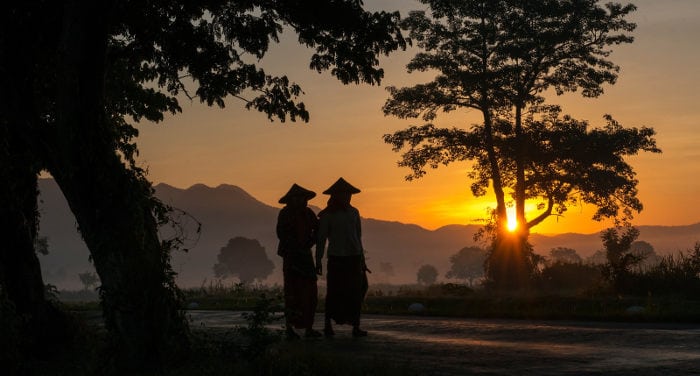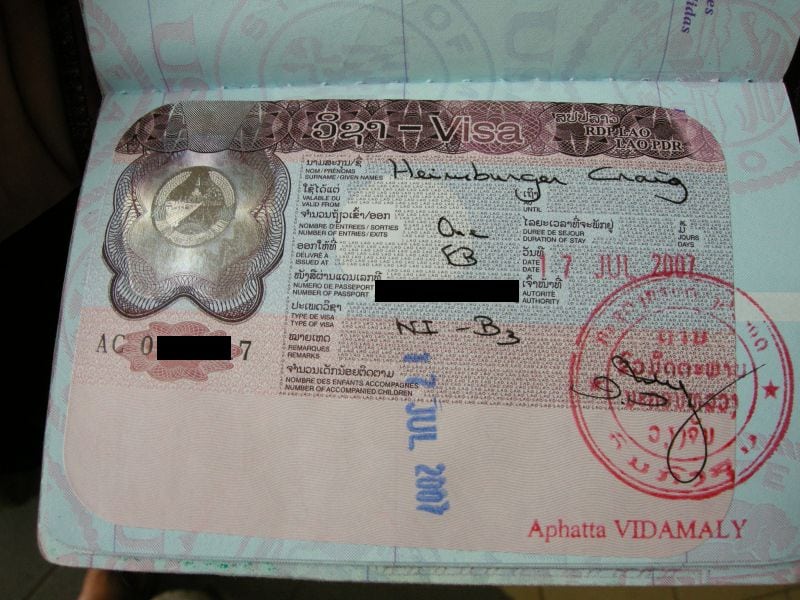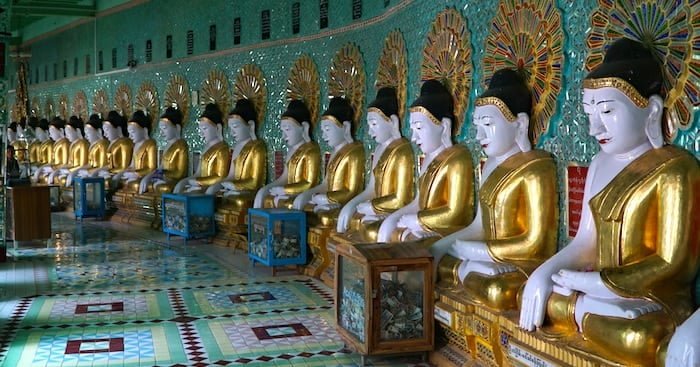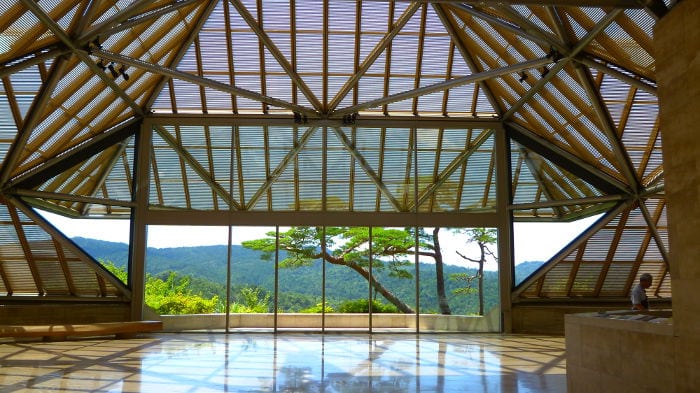
After Yangon, Inle Lake and Bagan, with this guide I’ll bring you to Mandalay and Myanmar’s ancient capitals: Amarapura and Sagaing.
A little history
Mandalay was the capital of Burma until 1885, when the English arrived and there was a decline of the Konbaung dynasty. The city is a grid of streets, and summarizes the country’s change in the modern era.
In fact, on one hand you’ll find buildings of historic value, including the royal palace and the Mahamuni Pagoda, and on the other you can find new buildings, the international airport and other modern buildings that “clash” with rural areas around it (here you’ll find my article on trekking at Inle Lake).
The city is known for its craftsmanship and the production of marionettes and wood, bronze and marble objects. Thanks to its strategic position along the Irrawaddy River, and its vicinity to China, Mandalay became an important center of trade.
I recommend that you spend at least two days there in order to fully discover its various facets.
What is there to see in Mandalay?
To discover the city, first of all I recommend that you spend an entire day visiting the Mahamuni Pagoda, the Shwenandaw monastery, completely carved in wood, the biggest book in the world that is preserved in the Kuthodaw Pagoda, the royal palace and at least a few markets.
The Mahamuni Pagoda is located in the southeast of the city and is one of the three most important in Myanmar, after the Shwedagona Pagoda in Yangoon and the Golden Rock, in Kyaiktiyo. In the middle of the pagoda there’s an almost 4 meter Buddha covered in gold leaf from pilgrims. At 4 in the morning, the city’s monks gather in front of the statue to wash their faces and at times even brush their teeth.
In the Kuthodaw Pagoda, you’ll find the biggest book in the world, built from more than 700 pieces of marble by two hundred artisans in 7 years.
The pagoda is located at the foot of Mandalay Hill, so after visiting it, head through the countless intermediate steps and balconies and enjoy a gorgeous sunset from the top of the city.
It will be an hour’s climb more or less, but it will be worth it: from atop, the city has another appeal and then, with each balcony, a different viewpoint.
Cultural and folkloric Mandalay. The marionettes of Mandalay and the Moustache Brothers
Mandalay is known as the cultural center of the country. I recommend that you attend a marionette show, ably built by the city’s artisans, one of Mandalay’s peculiarities. There are various artisans that offer shows of around an hour. One of the recommended places is the Mintha theatre. Here you’ll find more information about the theater and city festivals.
The famous Moustache Brothers are artisans that offer traditional dance show and comedies reflecting Burmese legends and culture. Unfortunately, being a bit subversive, the brothers were arrested in 2011 because it was uncomfortable for the regime.
Through the years however the two managed to get out of it, and today they perform for tourists out of their house. The house is located on 39th Street, between 80 and 81, and the show is every day at 20:30, for just 8,000 Kyat. If you’d like to see one of their performances, I recommend that you check with your hotel or ask a local.
I also recommend that you spend a few hours in the central market, or Zegyo (Zay Cho) market, located on 86th Street. This is a market that’s as old as the city itself, both covered and open where you can lose yourself in its alleys with their offerings of local products, foods, spices, handicrafts and anything else you can think of in a carousel of colors, smells and noises.
You can calmly discover the city on food, but if you’re lazy, you can rent a motorbike for just a few Kyat and take the opportunity to also visit nearby cities.
Around Mandalay: Amarapura and Sagaing
Amarapura is an ancient royal city and was the center of power until 1857, when the capital was moved to Mandalay, located 11 kilometers away.
In Amarapura, you can visit U Bein Bridge, a wonderful 1.2 kilometer teakwood structure that goes back 200 years. The bridge connects Amarapura to Lake Taungthaman and the village of the same name that was built in 1849.
Besides being an acclaimed tourist site, the bridge is crossed every day by local people and monks as an integral part of the surrounding community. It would be hard to enjoy the bridge all by yourself, but the best times to cross it are sunrise and sunset, when the sunlight creates a magical and mystic atmosphere. This is something not to be missed for photographers!
In half a day you can also see the interesting Mahagandayon Monastery, the largest in ex Burma. Founded in 1914, the monastery is a school that hosts more than 3,000 young monks not far from the abovementioned bridge.
There you’ll have the chance to taste the monks’ daily life and even participate in a meditation session if you’re interested, so that you can experience firsthand a small part of the immense philosophy hidden within Buddhism. In addition, at 10:30 in the morning every day, the monks wait for their lunch in a silent line. You can witness this rite, so long as you don’t disturb them.
Sagaing, was the capital of the Shan Kingdom in the XIV century and is located in a valley compared to Mandalay.
The ancient capital is famous for its hills littered with hundreds of silver and gold pagodas, stupas and monasteries that can be visited on foot, going from one hill to another across hundreds of stairs. The city is very enchanting and deserves a half day, even for the numerous monks that cross it, and for the spirituality and peace you can breathe in there.
In November, in Sagaing, there’s the Kaunghmudaw Pagoda Festival, an important cultural event with marionette shows and other theatrical performances that attract tourists, but especially locals who live in the surrounding countryside and villages.
Where to stay in Mandalay
I recommend that you book all three days in Mandalay, considering its vicinity to the other cities, which are comfortably reachable in a day with a motorbike, bicycle or local taxi.
Mandalay is the only case where I opted for a hostel outside of the guest house circuit. In fact, in the city you’ll find Ostello Bello, a Western-run hostel that’s very cute.
Click here to find a hotel or hostel in Mandalay.
Photo Credits: ![]() Mandalay Morning by Christopher Michel
Mandalay Morning by Christopher Michel



